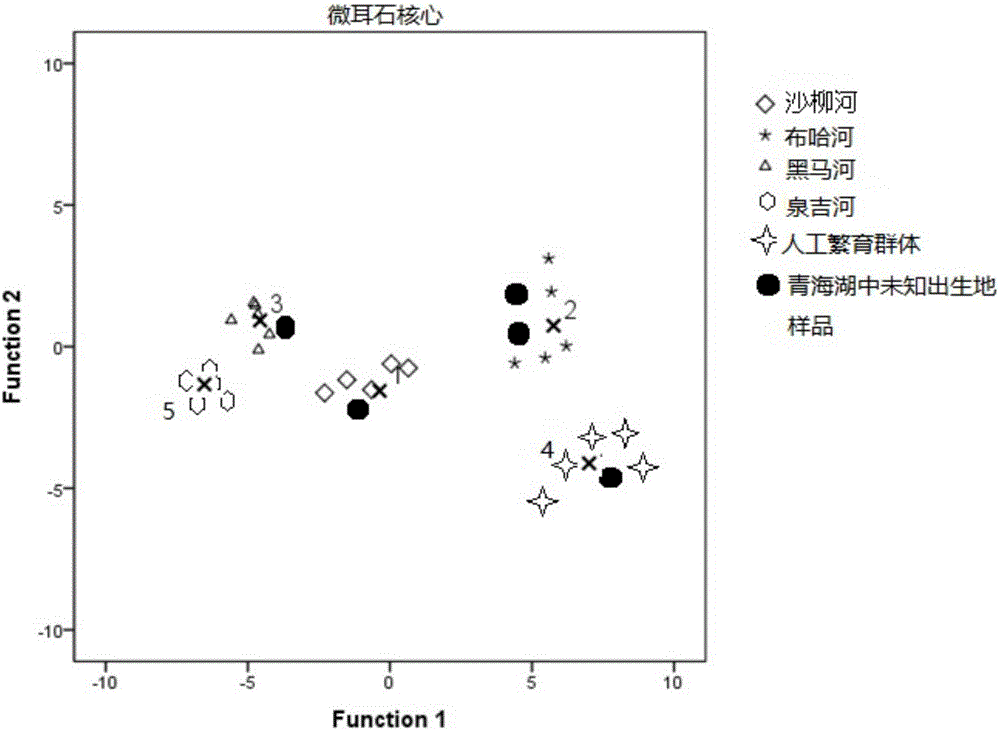Method for distinguishing artificially-bred Gymnocypris przewalskii and naturally-bred Gymnocypris przewalskii and application
A technology of artificial breeding and naked carp, applied in the fields of application, climate change adaptation, fish farming, etc., can solve the problems of discomfort, high cost, and inability to distinguish between artificial breeding groups and natural breeding groups
- Summary
- Abstract
- Description
- Claims
- Application Information
AI Technical Summary
Problems solved by technology
Method used
Image
Examples
Embodiment 1
[0025] (1) Sample collection: During the spring breeding season of naked carp in Qinghai Lake, five 1-year-old juveniles were collected from the four major rivers entering the lake (including Buha River, Heima River, Quanji River, and Shaliu River) that had not yet entered the lake. 5 pieces of 1-year-old juvenile fish cultured in the freshwater pond of Qinghai Lake Naked Carp Rescue Center; 5 naked carps of unknown birthplace captured in Qinghai Lake were used for the application analysis of the present invention.
[0026] (2) Separation and treatment of otoliths: Take out a pair of left and right micro otoliths of naked carp with carbon fiber tweezers, clean the soft tissue on the surface of otoliths with deionized distilled water, and then use Optima grade ultra-pure nitric acid (0.5% ) was cleaned under ultrasonic conditions, and then cleaned with ultrapure water under ultrasonic conditions, the cleaned otoliths were put into the prepared plastic molds, embedded with EPOFIX...
PUM
| Property | Measurement | Unit |
|---|---|---|
| Thickness | aaaaa | aaaaa |
Abstract
Description
Claims
Application Information
 Login to View More
Login to View More - R&D Engineer
- R&D Manager
- IP Professional
- Industry Leading Data Capabilities
- Powerful AI technology
- Patent DNA Extraction
Browse by: Latest US Patents, China's latest patents, Technical Efficacy Thesaurus, Application Domain, Technology Topic, Popular Technical Reports.
© 2024 PatSnap. All rights reserved.Legal|Privacy policy|Modern Slavery Act Transparency Statement|Sitemap|About US| Contact US: help@patsnap.com









